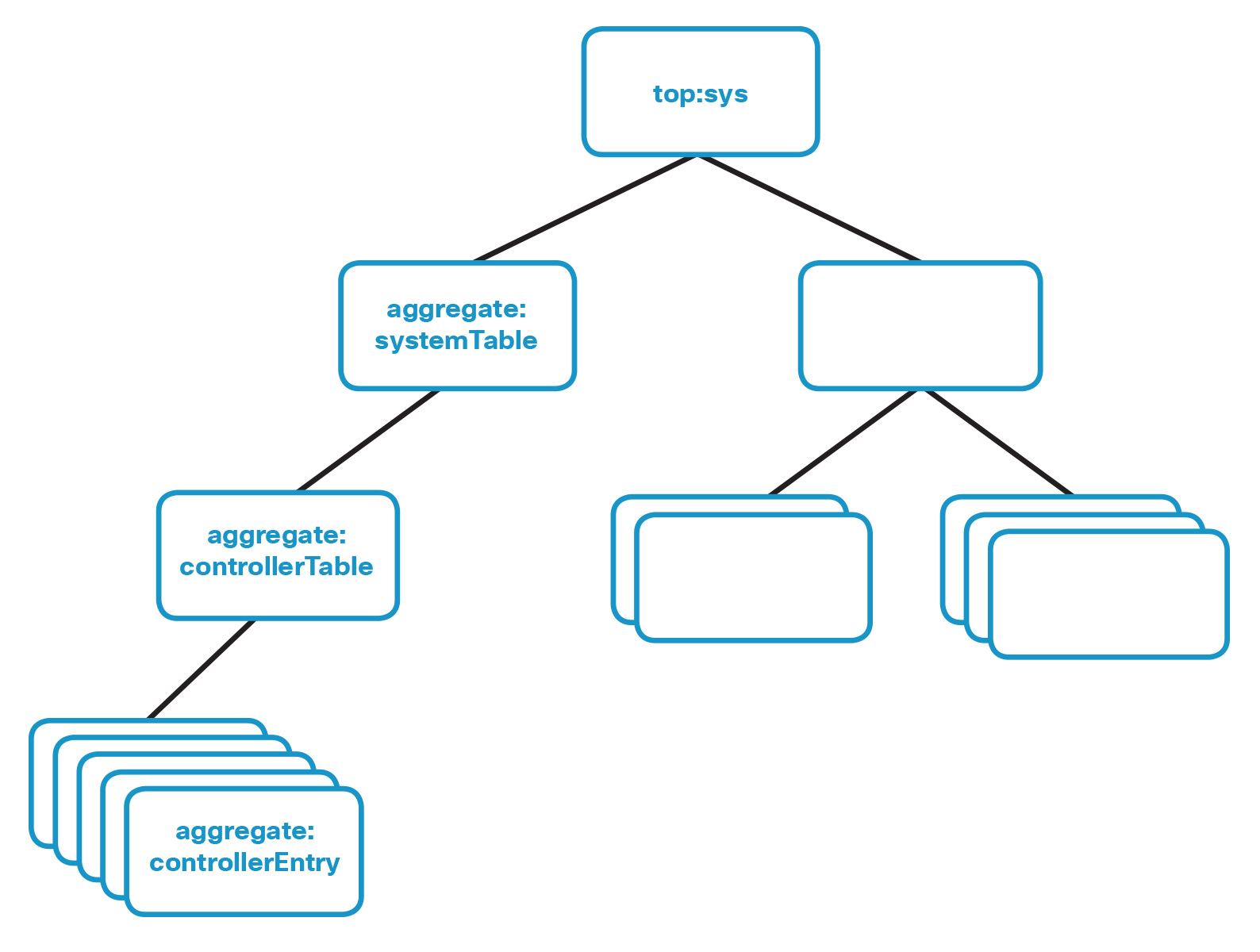The DME holds the repository for the state of the managed system in the Management Information Tree (MIT). The MIT manages and maintains the whole hierarchical tree of objects on the switch, with each object representing the configuration, operational status, accompanying statistics and associated faults for a switch function. The MIT is the single source of truth for the configuration and operational status of NX-OS features and elements. Object instances, also referred to as Managed Object (MOs), are stored in the MIT in a hierarchical tree, as shown below:

The general concept is similar to the tree-based hierarchy of a file system. The MO database is organized in such a way that there is a parent-child hierarchy, meaning there is a root node followed by a hierarchical group of children.
One such parent-child hierarchy is illustrated using the following example:

Parent-Child Containment Relationship in Open NX-OS Data Model
In the above example:
- top:sys is the root of the entire MIT
- aggregate:systemTable is a child of top:sys
- aggregate:controllerTable is a child of aggregate:systemTable
- parent/child relationship continues through the table
When there are user-provided distinguishers, values for the naming property of the object and multiple objects of the same class can exist in the same subtree. In the example above, multiple instances of the controller class can exist since it has a naming property ([id]) associated with it in which each instance will have a unique user supplied [id].